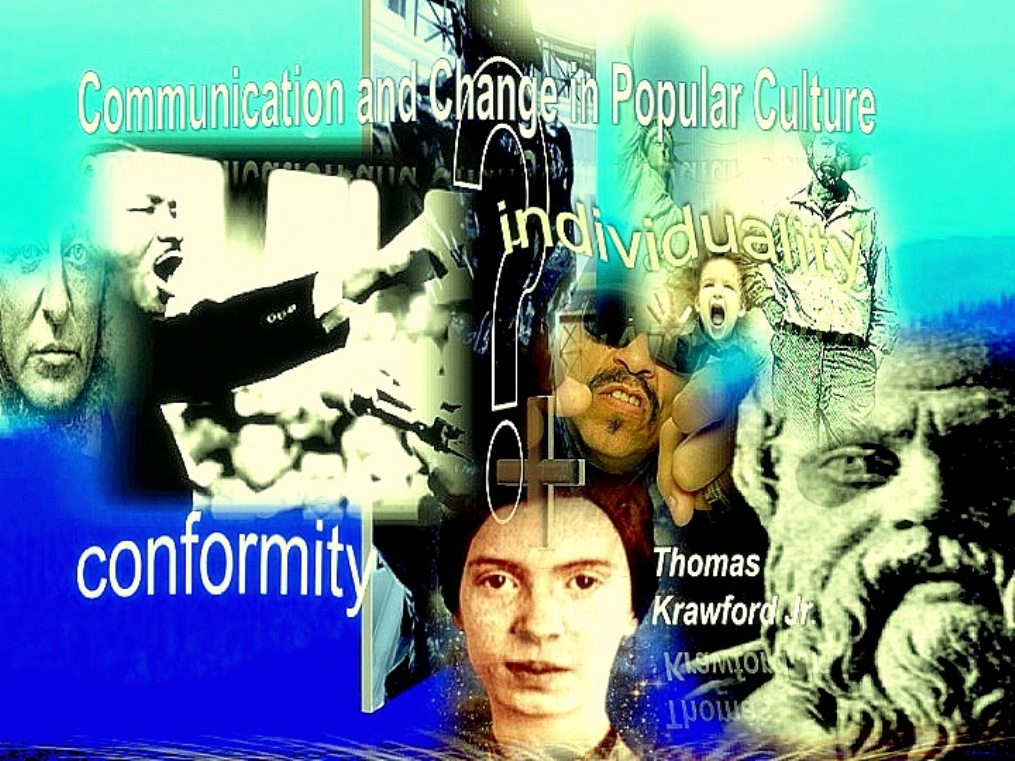The contrasting opinions of the extreme left of the Democratic Party and many party centrists over the issue of a "Public Option" in Health Care Insurance Reform is one example of this diametric opposition. For the sake of argument let's say for instance, the view of the left would label the President's recent comments on the issue a "selling out" of what should have been a non-negotiable provision to imposed and artificial principles adhered to by the rich and the insurance companies. While on the other hand, those who may opt for more of a compromise just to get the Bill through, may take the position that the actual "sense experience" of the situation should be the main determining factor. In this side's view, the existence and reality of Health Care Insurance Reform must take into account the undeniable geometry of the factors involved.
In this model, the we could say the former represents a poststructural view whereas the latter opposing side represents more of a humanist perspective. Yet, I maintain neither side is actually that far apart.
In previous posts, we have developed F. Nietzsche's idea that there is a necessity of error in perspective and illusion such that (according to an ontological transformation) the Subject, that which is inherent, is necessary.
We can say this because of the three elements of our assertion: p=perspective, q=illusion and the ratio of p|q=error. If we start with negation as a ratio ( |-->0<--| ) where two opposing quantities, one that is known and one that is not, oppose each other in a specific range we have two possible resulting generalities. One being Perspective ( |<---) the other being Illusion (--->| ). In some ways then, this approach is poststructural in so far that we are attempting to illustrate intuition as a range, a frame for conditions that allow us to predict inherent Subject as an integration of qualitative and quantitative capacity. Of course this also means we must redefine our parameters of what is and is not quantifiable in terms of so called "primitive" human nature. Moreover since we are also saying there is a Constancy of Occurrence of either perspective and illusion in joint, direct or inverse relation to the other (conjunctive, disjunctive and negation respectively) we are employing an positivist approach. On the other hand Object ( an ontological transformation from our positivist construction of Subject) is that quantity which is constructed from that capacity which is inherent and thus, probable.
If you are still with me here...
Before i get too far ahead, I want to take the opportunity to specify and fine tune this post and set the stage for the next one dealing with circumstantial occurrence and specific integration.
i am going to attempt to integrate propositional symbolic logic with the beginnings of predicate logic.
I'll go back and explain where i got most of this stuff in the next post, I promise. But for now, I am thinking about the commutative, associative and distributive properties as well as the order of operations fundamental in Mathematics. I don't see why we can't adapt these Mathematical descriptions of how symbols interact for our purposes in this discussion.
Thus, for every known quantity (a)
there exists some unknown capacity (b)
such that, (a) always integrates with (b) through
counter inter activity.
if and only if (a) represents a discrete quantity and (b) represents a continuous capacity when both (a) and (b) are in either joint, direct or inverse disjunction
AND
Some unknowns (are counter-interactional with every known quantity)
When, for some unknown capacity (a)
there exists a known quantity (b)
such that (a) always counter-interacts with (b)
as integration if and only if (a) unknown capacity is continuous when (b) remains a discrete quantity as both (a) and (b) are in either a joint, direct or inverse disjunction.
In other words, much like the current ongoing Health Care Insurance Reform National Discussion, inherency is identical to a ping pong game or a game of tennis, where the serve represents a "negation of what is known at the time of the serve." Afterall, why serve or play for that matter, if you know beforehand who is going to win?
For our purposes, we could even go so far as to suggest a similar relationship exists between qualitative and quantitative methods of research. Yet I hasten to add, there doesn't need to be such a large difference, since both are approaches based on reason: reason in this particular instance being that integration of inherent capacity and object quantity both camps ultimately share. The same connection may be made between humanists who require verification and poststructuralists who refute the validity of any one "truth." The point is both sides are as correct as they are mistaken in much the same way as a Ping Pong ball is hit back and forth between opponents. Error as we are using the term here describes a conjunction of known and unknown where Knowledge is a discrete quantity as instinct is a continuous capacity of space and time.
When for a given measure of "unknown" (a) there exists error (b)
Such that (a) is known through (b) if and only if (a) is discrete and (b) is continuous
Such that (b) is known by (a) if and only if the continuity of (b) substantiates the discretion of (a) as a joint, direct and inverse conjunction.
For example, with the recent Health Care Debate, everyone is getting hung up on the idea that error is necessarily a bad thing. The fact remains, many Americans on both sides of aisle agree "something" must be done not just for Health Care Insurance Reform but also for the many Americans recently unemployed. Error as we are discussing it here, isn't always about mistakes. Error is more about an equilibrium between unknown and known. What is known is known and what is unknown cannot be experienced or fully perceived until some act of expression is undertaken.
The system of counter-interactional logic we have discussed thus far would dictate then that "that which is known should outweigh that which is unknown" in a reasonably intelligent and democratic society. Otherwise, continued inaction would indeed invite an inverse occurrence rather than a joint or direct outcome.
With regards to our previous argument of the necessity of error in perspective and illusion:
Error is necessary in every illusion when
for every illusion (q) there exists an error (r)
such that (q) requires (r) for the function of constitution.
Thus, for every perspective (p) there exists error (r) if and only if (p) does not depend on (q).
We are attempting to describe an echo here: first the ping pong then the echoe from the ping pong. For example, in terms of the recent debate regarding Health Care Insurance Reform in America, we have to ask ourselves which is more valuable in both the short and long term: staying on the surface of the economic threat to Middle Class America by relying on an interaction many Republicans and more than a few Democrats wish existed, or investing time, energy and fiduciary resources in establishing a more involved integration in otherwise antagonistic elements of the existing establishment, towards a more balanced and logically economic and cultured alternative?
At this point of our illustration, we come to our first Therefore.
Object (Q) is probable of constituent quantity as illusion and perspective integration constitute Subject as The
TO (ST)
The Above Rectangular Coordinate System is an illustration of the ideas regarding Equilibrium this post discusses. The diagram also speaks directly to our current understanding of both the first and second laws of thermodynamics as those two laws relate to our argument concerning Subject and Object Interposition. But going beyond that, the concept of minimizing potential in the maximization of entropy is extended because the concept of restraint according to the above model, is or at least should take into account the logical interdependence of the range of instinct as infinite specific capacity and the finite but continuous quantity of object as general circumstance.
In other words, all systems move towards the simplest form of order, whether through transformational means or dissipated potential. Regardless of whether the Health Care Bill passes or not, the overall Health Care System will move towards the simplest order, one way or the other. And regardless of whether Al Quaeda is defeated in Afghanistan or not, again then overall System will move as it has always done, towards the simplest form of exchange and expression. The same can be said of Iran, Palestine and Israel, our own economy or the issue of whether or not I will ever be a student teacher. All things are of systems and all systems move towards the simplest order: the order in which the necessity of error in perspective and illusion dictates all possible human thought and behavior in terms of perception.
My ideas may not be good news for my friends of the Poststructural Camp or the Humanist Congress, but I maintain the logic is sound and inescapable. The best any of us can hope for is that we never stop believing that ALL of us, regardless of how meek or insignificant or ineffectual we may appear on the surface, have every natural and inherent right to be heard, understood and fully accounted for as human being on the face of this or any other place one might call, a home.
A few thoughts from
Tom
http://plato.stanford.edu/entries/hegel/
http://en.wikipedia.org/wiki/Problem_of_multiple_generality
http://en.wikipedia.org/wiki/Positivism
http://en.wikipedia.org/wiki/Empiricism.
http://www.lawofmaximumentropyproduction.com/


+of+IMG_9264.jpg)






